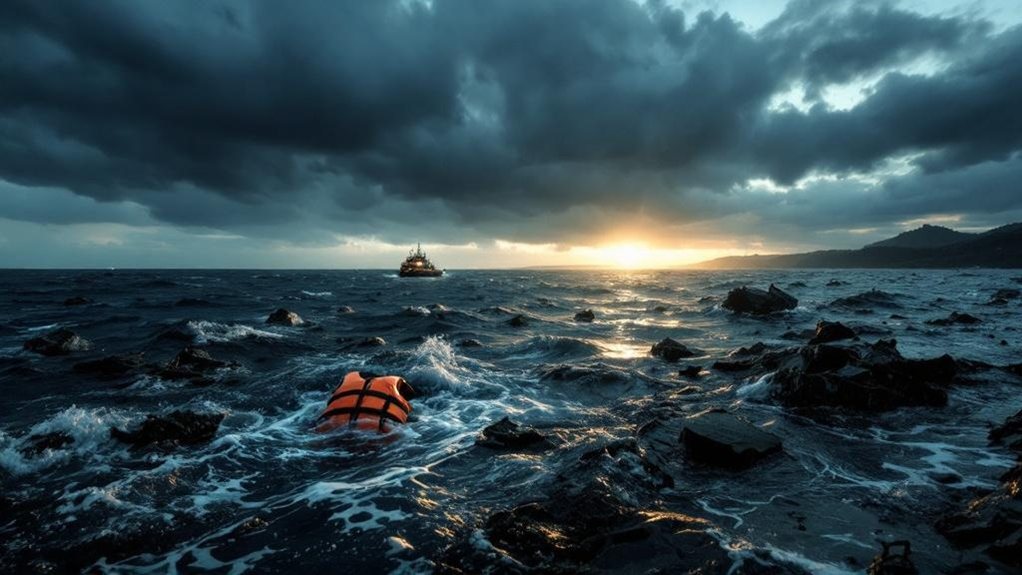In a tragic incident off the coast of Bali, a ferry disaster left dozens missing amid dangerous sea conditions. The mishap exposed significant lapses in Indonesia’s maritime safety protocols, such as engine leaks and inadequate maintenance. Rescue operations, involving over 160 personnel, faced challenges due to strong currents and communication issues. This disaster prompted urgent reforms in maritime safety regulations and highlighted a $2.6 billion crisis in infrastructure. The ongoing efforts to prevent future tragedies await further examination.
Survivors endured hours adrift at sea before rescue teams could reach them, with operations severely hampered by strong currents and chaotic maritime conditions. Despite the relentless efforts of search and rescue teams, the operation faced significant challenges due to poor communication infrastructure and a lack of emergency preparedness on the ferry. The rescue operation involved more than 160 rescuers, including police and military personnel, who were deployed to manage the crisis. The search for survivors continued for several days before authorities suspended efforts, leaving families of the missing in anguish as recovery operations proceeded.
Hours adrift at sea, survivors faced chaos as rescue efforts battled poor infrastructure and unpreparedness.
The disaster pointed to critical maritime safety failures, with engine leaks and inadequate ferry maintenance cited as significant contributing factors. The absence of proper emergency response measures and safety equipment on board further exacerbated the tragedy’s fatality count.
Indonesia’s maritime sector, historically plagued by safety issues, has seen over 1,000 fatalities since 2016, highlighting systemic flaws in vessel safety and operational standards. This incident triggered a national maritime safety reckoning in Indonesia, prompting regulatory and policy reforms aimed at modernizing fleets and improving emergency response infrastructure. Under the 2024 Shipping Law, ferries are now mandated to adopt real-time tracking technologies and AI-powered weather prediction tools. Additional measures include restrictions on foreign investment in sea transport and stricter vessel ownership size requirements. The Maritime Security Agency (BAKAMLA) is also expanding its patrol fleet to enhance maritime safety and monitoring capabilities.
The economic implications of the disaster are significant, exposing a $2.6 billion crisis in maritime safety and infrastructure. The regulatory overhaul is projected to create investment opportunities in maritime safety technology and fleet upgrades. Companies specializing in tracking, emergency communication, and weather forecasting technologies are poised for growth, as the industry is urged to comply swiftly with new standards to restore passenger confidence and prevent future tragedies.









